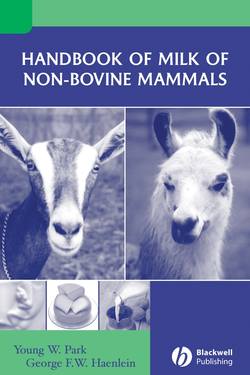Описание книги
No one can deny the fact that the cow is the primary dairy animal species to provide humans with nutritious dairy foods through its abundance of lacteal secretion. The goat or other minor dairy species will never be able to compete with the cow in terms of the volume of milk production. Yet, the contribution of milks from other secondary domesticated dairy species to the survival and well-being of mankind around the world is immense and invaluable. Testament to the importance of non-bovine milk is that more people drink the milk of goats than that of any other single species in the world. In developing and under-developed counties, the secondary dairy species play a crucial role in supplying the food and nutritional needs of the people in those regions. Due to the unavailability of cow milk and the low consumption of meat, the milks of minor species such as goat, buffalo, sheep, and camel are critical daily food sources of protein, phosphate and calcium. Furthermore, because of important and inherent hypoallergenic properties, milks of certain species such as goat milk have been recommended as substitutes in diets for those with cow milk allergies. Editors Park and Haenlein have assembled dairy and nutrition experts from around the world to contribute to the Handbook of Milk of Non-Bovine Mammals. Secondary dairy species addressed are the goat, sheep, buffalo, mare, camel, yak, deer (reindeer), sow, llama, alpaca, moose, musk ox, caribou, ass, elk, pinniped, polar bear and human. The book comprehensively covers the most important aspects of milk production including: trends and methods of raw milk production in different regions; compositional, nutritional, therapeutic, physico-chemical, and microbiological characteristics of the milks; processing technology; and types, distribution and consumption of the manufactured products from minor species milks. Of special note is coverage comparing specific human health attributes of milk from the various species, including nutritional, allergenic, immunological, and cultural factors. Because secondary dairy species have such a significant impact on human well-being and survival in many parts of the world, the Handbook of Milk of Non-Bovine Mammals is an essential reference book of leading-edge information for dairy scientists, nutritionists, food chemists, allergy specialists, health professionals, and allied professionals.
